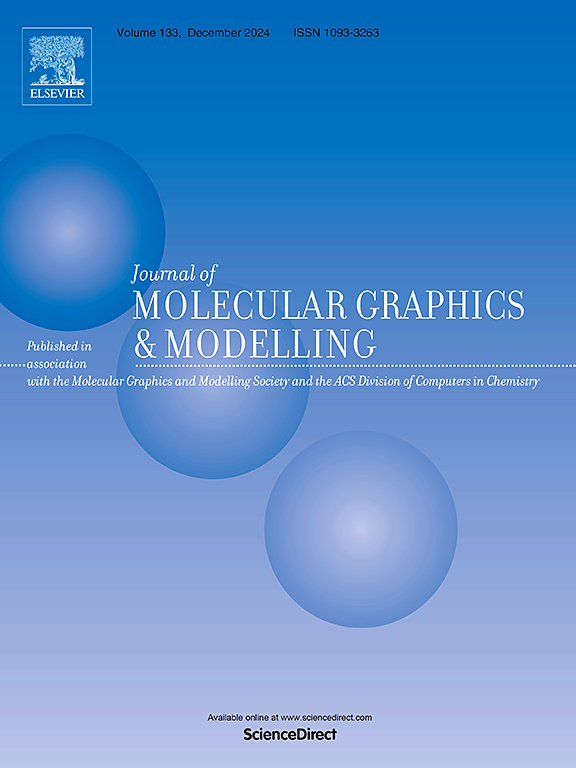Molecular dynamics study of functionalized carbon nanotube loaded with multiple doxorubicin targeted to folate receptor α
IF 2.7
4区 生物学
Q2 BIOCHEMICAL RESEARCH METHODS
引用次数: 0
Abstract
Two novel targeted drug delivery systems (DDSs) were designed: folate (FOL) conjugated (9, 9) carbon nanotube (CNT) loaded with 20 doxorubicin (DOX) molecules (FOL-CNT/20DOX) and folate (FOL) conjugated carboxylated (9, 9) CNT (COOH-CNT) loaded with 24 doxorubicin (DOX) molecules (FOL-COOH-CNT/24DOX). The targeted property to folate receptor α (FRα) was calculated using molecular dynamics (MD) calculations. The structures of the FRα/FOL-CNT/20DOX and FRα/FOL-COOH-CNT/24DOX complexes were analyzed in detail. Radial distribution functions were calculated to analyze the distribution of DOX molecules around the CNTs in the complexes. The variation of representative distances and angles between novel DDSs and FRα, number of hydrogen bonds, and secondary structures of FRα during the MD simulations were studied to analyze the dynamic properties of the novel DDSs targeted to FRα. We further analyzed the root mean square displacement and root mean square fluctuation in detail. The results indicate that the two novel DDSs were very stable and well targeted with FRα, and FOL-COOH-CNT/24DOX had better targeting and stability than FOL-CNT/20DOX. This study is expected to provide insights for the design of efficient nano drug delivery systems with good FRα targeting and controllable drug loading dosage.

求助全文
约1分钟内获得全文
求助全文
来源期刊

Journal of molecular graphics & modelling
生物-计算机:跨学科应用
CiteScore
5.50
自引率
6.90%
发文量
216
审稿时长
35 days
期刊介绍:
The Journal of Molecular Graphics and Modelling is devoted to the publication of papers on the uses of computers in theoretical investigations of molecular structure, function, interaction, and design. The scope of the journal includes all aspects of molecular modeling and computational chemistry, including, for instance, the study of molecular shape and properties, molecular simulations, protein and polymer engineering, drug design, materials design, structure-activity and structure-property relationships, database mining, and compound library design.
As a primary research journal, JMGM seeks to bring new knowledge to the attention of our readers. As such, submissions to the journal need to not only report results, but must draw conclusions and explore implications of the work presented. Authors are strongly encouraged to bear this in mind when preparing manuscripts. Routine applications of standard modelling approaches, providing only very limited new scientific insight, will not meet our criteria for publication. Reproducibility of reported calculations is an important issue. Wherever possible, we urge authors to enhance their papers with Supplementary Data, for example, in QSAR studies machine-readable versions of molecular datasets or in the development of new force-field parameters versions of the topology and force field parameter files. Routine applications of existing methods that do not lead to genuinely new insight will not be considered.
 求助内容:
求助内容: 应助结果提醒方式:
应助结果提醒方式:


